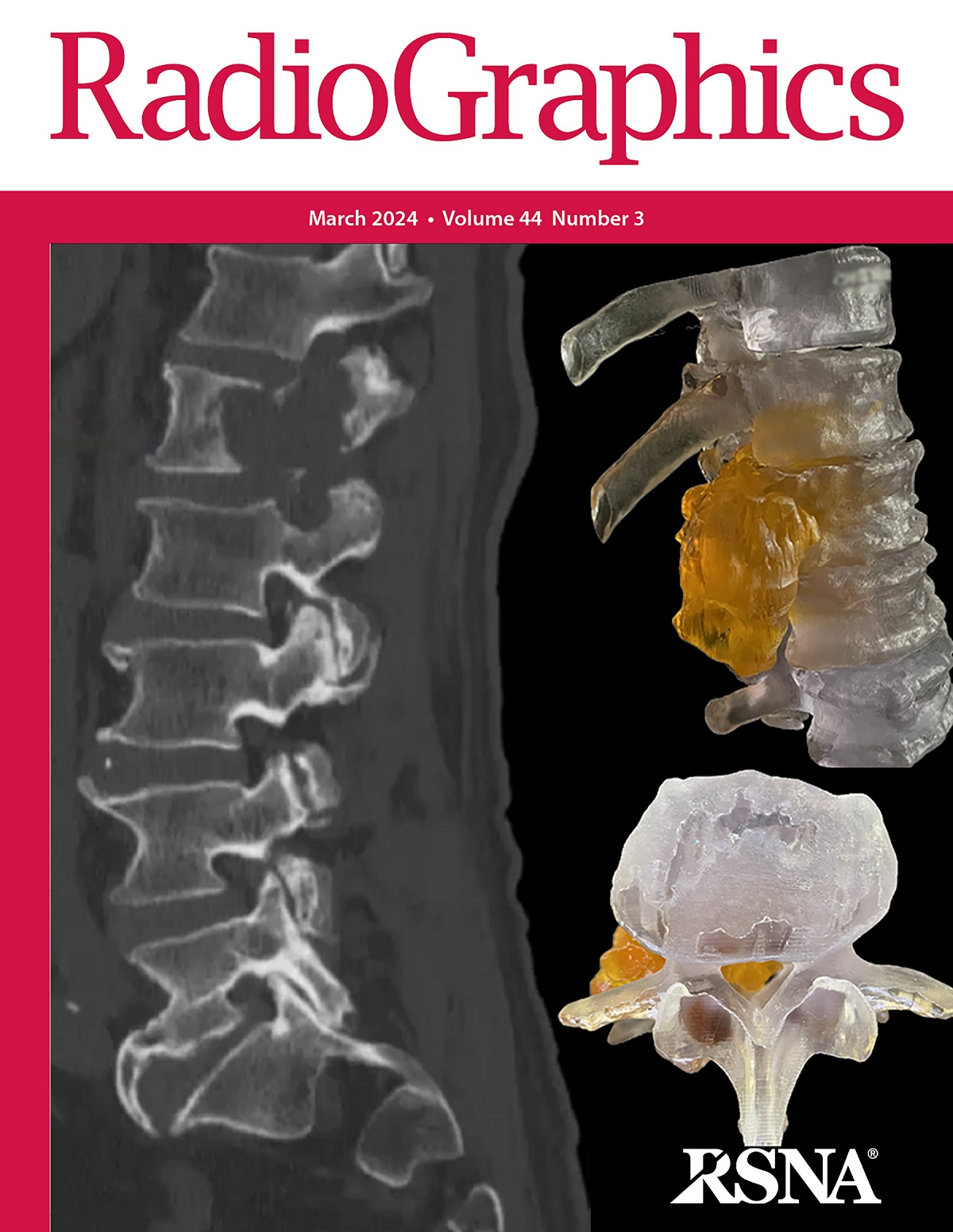T1-weighted Motion Mitigation in Abdominal MRI: Technical Principles, Clinical Applications, Current Limitations, and Future Prospects.
Orpheus Kolokythas, Ebru Yaman Akcicek, Halit Akcicek, Noah Briller, Naveen Rajamohan, Takeshi Yokoo, Hans M Peeters, Jonathan W Revels, Guilherme Moura Cunha, Dushyant V Sahani, Achille Mileto
求助PDF
{"title":"T1-weighted Motion Mitigation in Abdominal MRI: Technical Principles, Clinical Applications, Current Limitations, and Future Prospects.","authors":"Orpheus Kolokythas, Ebru Yaman Akcicek, Halit Akcicek, Noah Briller, Naveen Rajamohan, Takeshi Yokoo, Hans M Peeters, Jonathan W Revels, Guilherme Moura Cunha, Dushyant V Sahani, Achille Mileto","doi":"10.1148/rg.230173","DOIUrl":null,"url":null,"abstract":"<p><p>T1-weighted (T1W) pulse sequences are an indispensable component of clinical protocols in abdominal MRI but usually require multiple breath holds (BHs) during the examination, which not all patients can sustain. Patient motion can affect the quality of T1W imaging so that key diagnostic information, such as intrinsic signal intensity and contrast enhancement image patterns, cannot be determined. Patient motion also has a negative impact on examination efficiency, as multiple acquisition attempts prolong the duration of the examination and often remain noncontributory. Techniques for mitigation of motion-related artifacts at T1W imaging include multiple arterial acquisitions within one BH; free breathing with respiratory gating or respiratory triggering; and radial imaging acquisition techniques, such as golden-angle radial k-space acquisition (stack-of-stars). While each of these techniques has inherent strengths and limitations, the selection of a specific motion-mitigation technique is based on several factors, including the clinical task under investigation, downstream technical ramifications, patient condition, and user preference. The authors review the technical principles of free-breathing motion mitigation techniques in abdominal MRI with T1W sequences, offer an overview of the established clinical applications, and outline the existing limitations of these techniques. In addition, practical guidance for abdominal MRI protocol strategies commonly encountered in clinical scenarios involving patients with limited BH abilities is rendered. Future prospects of free-breathing T1W imaging in abdominal MRI are also discussed. <sup>©</sup>RSNA, 2024 See the invited commentary by Fraum and An in this issue.</p>","PeriodicalId":54512,"journal":{"name":"Radiographics","volume":"44 8","pages":"e230173"},"PeriodicalIF":5.2000,"publicationDate":"2024-08-01","publicationTypes":"Journal Article","fieldsOfStudy":null,"isOpenAccess":false,"openAccessPdf":"","citationCount":"0","resultStr":null,"platform":"Semanticscholar","paperid":null,"PeriodicalName":"Radiographics","FirstCategoryId":"3","ListUrlMain":"https://doi.org/10.1148/rg.230173","RegionNum":1,"RegionCategory":"医学","ArticlePicture":[],"TitleCN":null,"AbstractTextCN":null,"PMCID":null,"EPubDate":"","PubModel":"","JCR":"Q1","JCRName":"RADIOLOGY, NUCLEAR MEDICINE & MEDICAL IMAGING","Score":null,"Total":0}
引用次数: 0
引用
批量引用
Abstract
T1-weighted (T1W) pulse sequences are an indispensable component of clinical protocols in abdominal MRI but usually require multiple breath holds (BHs) during the examination, which not all patients can sustain. Patient motion can affect the quality of T1W imaging so that key diagnostic information, such as intrinsic signal intensity and contrast enhancement image patterns, cannot be determined. Patient motion also has a negative impact on examination efficiency, as multiple acquisition attempts prolong the duration of the examination and often remain noncontributory. Techniques for mitigation of motion-related artifacts at T1W imaging include multiple arterial acquisitions within one BH; free breathing with respiratory gating or respiratory triggering; and radial imaging acquisition techniques, such as golden-angle radial k-space acquisition (stack-of-stars). While each of these techniques has inherent strengths and limitations, the selection of a specific motion-mitigation technique is based on several factors, including the clinical task under investigation, downstream technical ramifications, patient condition, and user preference. The authors review the technical principles of free-breathing motion mitigation techniques in abdominal MRI with T1W sequences, offer an overview of the established clinical applications, and outline the existing limitations of these techniques. In addition, practical guidance for abdominal MRI protocol strategies commonly encountered in clinical scenarios involving patients with limited BH abilities is rendered. Future prospects of free-breathing T1W imaging in abdominal MRI are also discussed. © RSNA, 2024 See the invited commentary by Fraum and An in this issue.
腹部磁共振成像中的 T1 加权运动缓解:腹部磁共振成像中的 T1 加权运动缓解:技术原理、临床应用、当前局限和未来展望》(Technical Principles, Clinical Applications, Current Limitations, and Future Prospects.
T1 加权(T1W)脉冲序列是腹部磁共振成像临床方案中不可或缺的组成部分,但在检查过程中通常需要多次屏气(BH),并非所有患者都能承受。患者的移动会影响 T1W 成像的质量,从而无法确定关键的诊断信息,如内在信号强度和对比度增强图像模式。患者的运动还会对检查效率产生负面影响,因为多次采集尝试会延长检查时间,而且通常不会产生任何影响。减轻 T1W 成像中运动相关伪影的技术包括:在一个 BH 内进行多次动脉采集;呼吸门控或呼吸触发的自由呼吸;以及径向成像采集技术,如黄金角径向 k 空间采集(星形堆叠)。虽然这些技术都有其固有的优势和局限性,但选择特定的运动缓解技术要考虑多个因素,包括所研究的临床任务、下游技术影响、患者状况和用户偏好。作者回顾了采用 T1W 序列的腹部磁共振成像中自由呼吸运动缓解技术的技术原理,概述了已确立的临床应用,并概述了这些技术的现有局限性。此外,还为涉及 BH 能力有限患者的临床场景中常见的腹部 MRI 方案策略提供了实用指导。还讨论了腹部磁共振成像中自由呼吸 T1W 成像的未来前景。©RSNA,2024 见本期 Fraum 和 An 的特邀评论。
本文章由计算机程序翻译,如有差异,请以英文原文为准。


